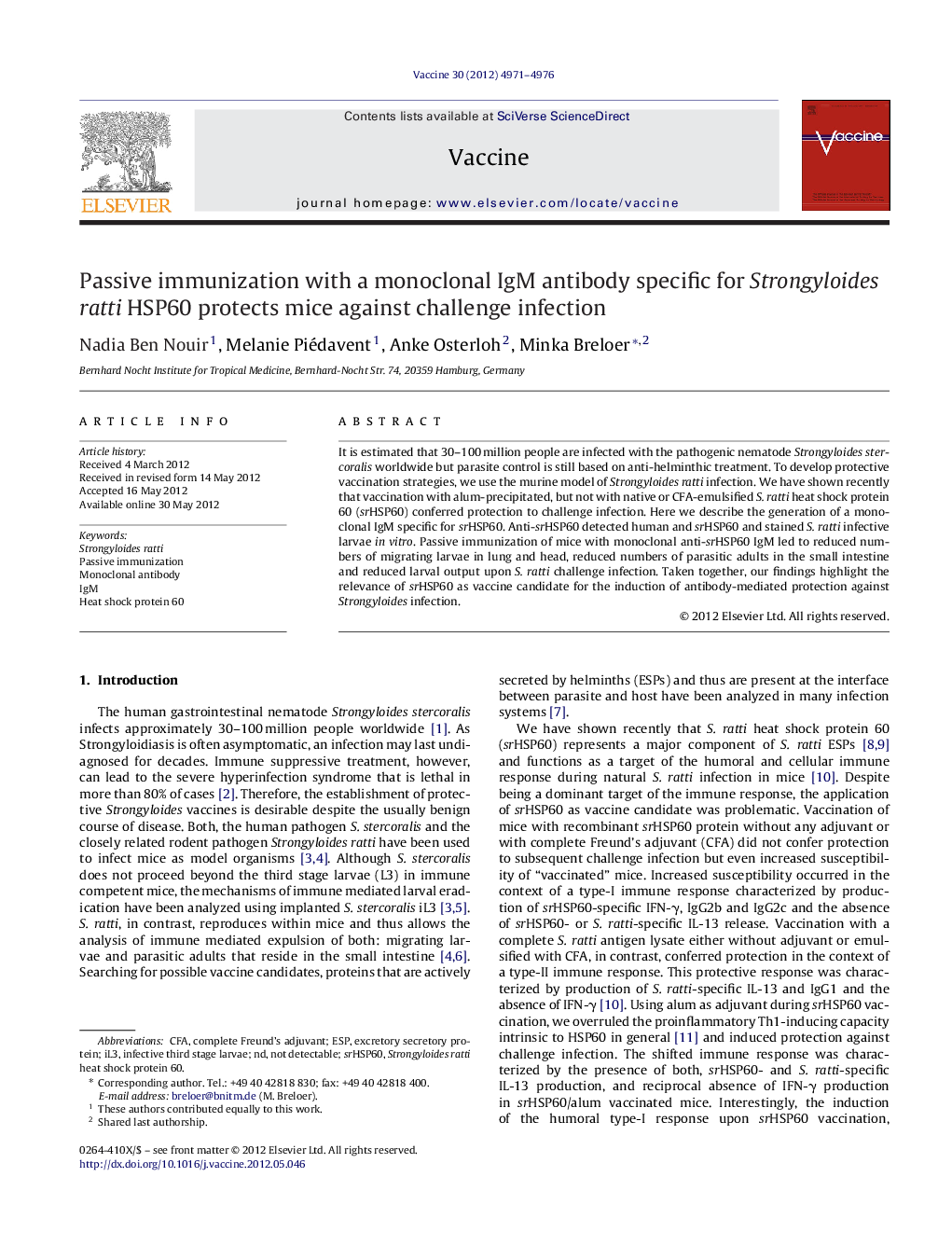| Article ID | Journal | Published Year | Pages | File Type |
|---|---|---|---|---|
| 2402892 | Vaccine | 2012 | 6 Pages |
It is estimated that 30–100 million people are infected with the pathogenic nematode Strongyloides stercoralis worldwide but parasite control is still based on anti-helminthic treatment. To develop protective vaccination strategies, we use the murine model of Strongyloides ratti infection. We have shown recently that vaccination with alum-precipitated, but not with native or CFA-emulsified S. ratti heat shock protein 60 (srHSP60) conferred protection to challenge infection. Here we describe the generation of a monoclonal IgM specific for srHSP60. Anti-srHSP60 detected human and srHSP60 and stained S. ratti infective larvae in vitro. Passive immunization of mice with monoclonal anti-srHSP60 IgM led to reduced numbers of migrating larvae in lung and head, reduced numbers of parasitic adults in the small intestine and reduced larval output upon S. ratti challenge infection. Taken together, our findings highlight the relevance of srHSP60 as vaccine candidate for the induction of antibody-mediated protection against Strongyloides infection.
► We describe an anti-srHSP60 mAb that binds to Strongyloides ratti infective third stage larvae. ► Passive immunization with anti-srHSP60 mAb protected mice from challenge infection. ► Protection was predominantly mediated by improved killing of migrating larvae.
